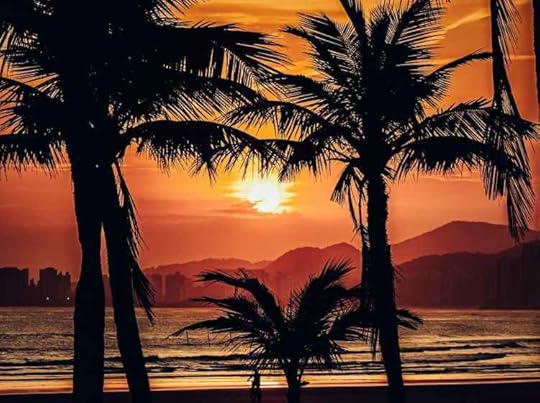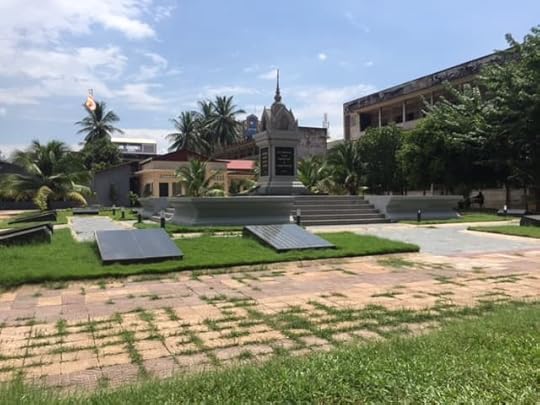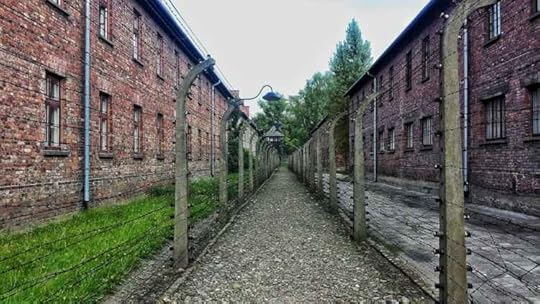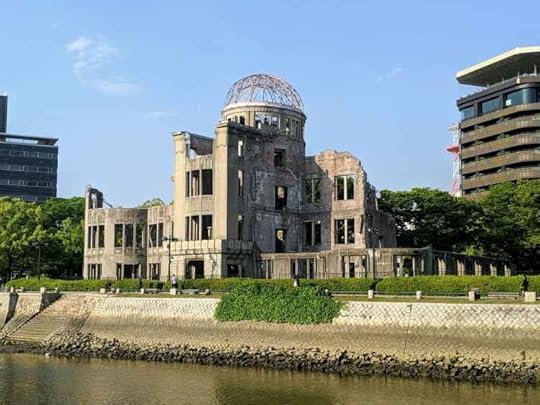Dark Tourism: Learning Through Humans Worst Atrocities
 Photo credit Pexels-Andersonmartins Retratos /*! elementor - v3.21.0 - 08-05-2024 */.elementor-widget-text-editor.elementor-drop-cap-view-stacked .elementor-drop-cap{background-color:#69727d;color:#fff}.elementor-widget-text-editor.elementor-drop-cap-view-framed .elementor-drop-cap{color:#69727d;border:3px solid;background-color:transparent}.elementor-widget-text-editor:not(.elementor-drop-cap-view-default) .elementor-drop-cap{margin-top:8px}.elementor-widget-text-editor:not(.elementor-drop-cap-view-default) .elementor-drop-cap-letter{width:1em;height:1em}.elementor-widget-text-editor .elementor-drop-cap{float:left;text-align:center;line-height:1;font-size:50px}.elementor-widget-text-editor .elementor-drop-cap-letter{display:inline-block}
Photo credit Pexels-Andersonmartins Retratos /*! elementor - v3.21.0 - 08-05-2024 */.elementor-widget-text-editor.elementor-drop-cap-view-stacked .elementor-drop-cap{background-color:#69727d;color:#fff}.elementor-widget-text-editor.elementor-drop-cap-view-framed .elementor-drop-cap{color:#69727d;border:3px solid;background-color:transparent}.elementor-widget-text-editor:not(.elementor-drop-cap-view-default) .elementor-drop-cap{margin-top:8px}.elementor-widget-text-editor:not(.elementor-drop-cap-view-default) .elementor-drop-cap-letter{width:1em;height:1em}.elementor-widget-text-editor .elementor-drop-cap{float:left;text-align:center;line-height:1;font-size:50px}.elementor-widget-text-editor .elementor-drop-cap-letter{display:inline-block} People often ask me why I visit so many dark tourism destinations. There are two essential reasons:
To better understand and learn from humanity’s mistakes.
To put things in perspective and be grateful for how good I have it.
While it can be a daunting and often harrowing experience visiting the dark tourism sites I have as a digital nomad, exploring these famous museums and sites around the world from a dark tourism perspective offers a unique lens through which to delve into history, culture, and human experiences. From somber reminders of past tragedies to thought-provoking exhibitions, there’s a wealth of material to cover. Whether it’s visiting places like the Hiroshima Peace Memorial in Japan, the Auschwitz-Birkenau concentration camp in Poland, or the 9/11 Memorial & Museum in New York City, each site offers profound insights into our collective past.
In this post, we will look at dark tourism sites I have visited, which include:
The Killing Fields – Phnom Penh, Cambodia
Tuol Sleng Genocide Museum – Phnom Penh, Cambodia
District Six Museum – Cape Town, South Africa
The Apartheid Museum, Johannesburg, South Africa
War Museum – Ho Chi Minh, Vietnam
Old Slave Market – Zanzibar, Tanzania
And dark tourism destinations I have not, but which are on my list:
Auschwitz–Birkenau concentration camp, Poland
Port Arthur – Tasmania, Australia
The United States National Slavery Museum – Virginia, USA
Kura Hulanda Museum – Willemstad, Curacao
Hiroshima Peace Memorial – Hiroshima, Japan
9/11 Memorial and Museum – New York City, USA
Cambodia's Dark Toursim Tuol Sleng Genocide Museum - Phnom Penh, Cambodia
I went to Cambodia on a volunteer trip where I raised and donated money towards building homes for direct descendents of victims of the Khmer Rouge civil war. Or, more accurately, genocide. Part of the volunteer program involved visiting some historical dark tourism sites to get a better understanding of what this country and its people went through. And boy was it an eye-opener.
Visiting the Tuol Sleng Genocide Museum in Phnom Penh, Cambodia, is an emotionally profound journey into the heart of the Khmer Rouge regime’s reign of terror. Once a high school, the site was transformed into a notorious interrogation and torture center during the late 1970s. Today, it stands as a haunting memorial to the victims of Cambodia’s genocide, offering a sobering glimpse into the country’s tragic past.
As you step through the gates of Tuol Sleng, they are immediately confronted with the stark realities of the Khmer Rouge’s brutality. You are guided by an audio guided tour explaining each room. The museum’s solemn halls are lined with rows of prison cells, each one a silent witness to the countless lives that were lost within these walls. Photographs of the victims, many of whom were tortured and executed on-site, serve as a haunting reminder of the human cost of totalitarianism.
The Killing Fields - Phnom Penh (outskirts)
Next up was the Killing Fields, which almost left me in tears. Situated just outside Phnom Penh, the Choeung Ek Genocidal Center, commonly known as the Killing Fields, stands as a stark reminder of the atrocities committed during the Khmer Rouge regime.
As you walk through the serene landscape of this dark history destination, you’re confronted with the chilling reality of Cambodia’s past. It is full-on, with mass graves, marked by simple memorials and haunting displays of human remains (zoom in on pic above), serve as silent witnesses to the brutality of the Khmer Rouge regime, which resulted in the deaths of an estimated two million people through execution, forced labor, and starvation.
What I found quite strange is how the serene surroundings of the Killing Fields stand in stark contrast to the horrors that once unfolded on this very ground. If it were not for the dark history and mass graves on the dark tourism destination, the place is otherwise a beautiful and peaceful nature reserve.
South Africa Dark Tourism Destinations District Six Museum - Cape Town Photo credit Zoe Reeve-Unsplash
Photo credit Zoe Reeve-Unsplash Once a vibrant and diverse community, District Six was forcibly designated as a “whites-only” area under apartheid-era policies in the 1960s. The museum stands as a tribute to the thousands of people who were forcibly removed from their homes and livelihoods, their communities bulldozed to make way for racial segregation.
Upon entering the museum, you are greeted by a wealth of photographs, artifacts, and personal stories that vividly capture the spirit and resilience of the District Six community. Exhibits chronicle the vibrant multiculturalism that once thrived in the area. For any fans of the brilliant SciFi movie, District 9, directed by South African Neill Blomkamp, the storyline is a metaphor for the dark tourism site, District 6 and apartheid.
But it’s not all dark – the city is one of my favourites. Here’s ten reasons why Cape Town as a digital nomad rocks.
The Apartheid Museum - Johannesburg Photo credit Michael Schofield-Unsplash
Photo credit Michael Schofield-Unsplash Staying in South Africa but moving to Johannesburg, visiting The Apartheid Museum in Johannesburg, South Africa, is a deeply immersive and educational experience that offers profound insights into the country’s tumultuous history of racial segregation and oppression. Situated near the heart of the city, the museum stands as a powerful tribute to the resilience of the South African people and a testament to the ongoing struggle for freedom and equality.
The museum’s meticulously curated collections chronicle the rise and fall of apartheid, from its origins in colonial-era segregation policies to its eventual dismantling in the early 1990s. Exhibits delve into the systemic racism, discrimination, and violence that defined the apartheid era, highlighting the profound social, economic, and psychological impact on individuals and communities across South Africa. As such, the Apartheid Museum stands as the most significant dark tourism destination in the country.
Stone Town - Zanzibar, Tanzania Photo credit Javi Lorbada-Unsplash
Photo credit Javi Lorbada-Unsplash My most recent dark tourism experience (and where I am currently based at the time of writing after working remotely from Kenya) was in Stone Town, Zanzibar. While the island is gorgeous and renowned for its rich history and vibrant culture, beneath its picturesque facade lies a dark past deeply intertwined with the East African slave trade. From the 17th to the 19th centuries, Zanzibar served as a major hub for the Arab slave trade, with thousands of enslaved Africans passing through the island.
Stone Town, with its narrow streets and historic buildings, was at the heart of this trade, with slave markets operating openly in the city. Today, the town’s haunting history is preserved in sites like the Anglican Cathedral, built on the site of the former slave market. Here, you can enter the underground chambers where they crammed hundreds of slaves into small spaces, with only 30% of them surviving. It serves as a poignant reminder of this tragic chapter in human history.
War Museum - Ho Chi Minh, Vietnam
This one was a real eye-opener for me. Having grown up on American Vietnam War movies, it was somewhat a shock to see the story told from the Vietnamese side. Unlike the glorified portrayals often depicted in American war movies, this museum presents a stark and unfiltered account of the conflict, showcasing the devastating impact of war on the Vietnamese people.
Through powerful exhibits, including photographs, artifacts, and personal testimonies, visitors are confronted with the horrors of war, from the brutality of combat to the lasting effects of Agent Orange and other chemical weapons. Agent Orange was something I had not heard of before and the devastating effects it caused, some of which are still felt today, was heartbreaking to say the least. I feel deeply ashamed that my own country, Australia, had played a role in this most futile of wars which is now evidenced inside this dark tourism destination.
Germany's Dark Tourism Sites The Bergen-Belsen Museum - Luneburg Heath, Germany
Visiting The Bergen-Belsen Museum in Lüneburg Heath, Germany, is a poignant and solemn experience that serves as a powerful reminder of the atrocities committed during the Holocaust, arguably the most astronomical war crime on this list. Situated on the grounds of the former Bergen-Belsen concentration camp, the museum stands as a testament to the millions of lives lost and the enduring legacy of Nazi brutality.
Upon entering the museum, visitors are immediately struck by the haunting atmosphere and solemnity of the site. The museum’s exhibits provide a comprehensive overview of the camp’s history, from its establishment as a prisoner-of-war camp in 1940 to its transformation into a concentration camp in 1943. Through photographs, artifacts, and personal testimonies, visitors gain insight into the horrific conditions endured by prisoners, including overcrowding, starvation, and disease.
Guided tours offer visitors the opportunity to explore the camp’s memorial sites, including mass graves, monuments, and the preserved remains of the barracks. As visitors bear witness to the physical remnants of the camp’s horrors, they are challenged to confront the darkest chapters of human history and to reflect on the importance of remembrance, education, and vigilance in the fight against hatred and intolerance.
Auschwitz-Birkenau Concentration Camp - Poland Photo by Pixabay
Photo by Pixabay Arguably the darkest site on the dark tourism list and, from first-hand accounts, the most eerie to visit. Located in Poland (not Germany), stepping foot on Auschwitz-Birkenau concentration camp is a profoundly sobering and emotionally challenging experience that offers a stark reminder of the horrors of the Holocaust. Situated near the town of Oświęcim, Auschwitz-Birkenau stands as one of the most infamous symbols of Nazi atrocities during World War II. As visitors step through the gates of the camp, they are transported back in time to a dark chapter of human history.
The museum’s exhibits provide a comprehensive overview of the camp’s grim reality, chronicling the systematic persecution, dehumanization, and mass murder of millions of innocent people, primarily Jews, but also Roma, Poles, Soviet prisoners of war, and others deemed “undesirable” by the Nazi regime. Photographs, artifacts, and personal testimonies offer a haunting glimpse into the daily lives of the prisoners, as well as the brutality and inhumanity they endured at the hands of their captors.
Ground Zero - New York, USA
 Photo by Roberto Lee Cortes - Pexels
Photo by Roberto Lee Cortes - Pexels The new tower, museum and memorial was still being built when I visited here in 2008. Today, Ground Zero in New York City holds a solemn place in the realm of dark tourism, representing one of the most recent and profoundly impactful events in modern history. The site, where the Twin Towers of the World Trade Center once stood before the tragic events of September 11, 2001, serves as a poignant reminder of the lives lost and the enduring repercussions of terrorism.
As visitors stand amidst the somber memorial pools, tracing the names of the nearly 3,000 victims inscribed around them, they are immersed in a visceral experience of mourning and remembrance. The accompanying 9/11 Memorial Museum further delves into the events of that fateful day, offering a comprehensive narrative that honors the memories of the fallen while confronting the complexities of terrorism and its global ramifications. What’s special here is you can get tour guides with direct connections to 9/11.
Port Arthur - Tasmania, Australia Photo credit Keith Davey-Unsplash
Photo credit Keith Davey-Unsplash Port Arthur in Tasmania was known for housing some of the most hardened and repeat offenders among the convict population in Australia during the 19th century. Once a notorious penal colony during the 19th century, this remote settlement now serves as a solemn reminder of the harsh realities endured by convicts and colonial settlers. Port Arthur served as a place to isolate and control convicts deemed particularly troublesome or dangerous to the penal system. These individuals faced brutal conditions and stricter discipline at Port Arthur, including solitary confinement and hard labor.
Through guided tours and immersive exhibits, guests delve into the lives of those who lived and labored within its walls, bearing witness to tales of hardship, resilience, and tragedy. You arrange day-trips from Hobart (Tasmania’s capital city) about one hour away.
Kura Hulanda Museum - Willemstad, Curacao
While we’ve explored the East African and Indian Ocean slave market in Zanzibar, the most notorious slave trade happened across the Atlantic to the Americas and the Caribbean. You can learn all about it at the Kura Hulanda Museum in Curacao. Housed within a meticulously restored 18th-century merchant’s house, the museum provides a comprehensive narrative of the transatlantic slave trade and its enduring impact on Curacao and the wider Caribbean region.
Through thought-provoking exhibits, including artifacts, artworks, and multimedia presentations, guests are confronted with uncomfortable truths and reflect on the shared humanity of those whose lives were shaped by this dark chapter in history.
Hiroshima Peace Memorial - Hiroshima, Japan
 From Credit Caitlin James-Unsplash
From Credit Caitlin James-Unsplash Another eerie site to visit, the Hiroshima Peace Memorial in Hiroshima, Japan commemorates the devastating impact of the atomic bombing on August 6, 1945. The memorial, also known as the Atomic Bomb Dome or Genbaku Dome, located near the epicenter of the explosion, was preserved as a memorial to the bombing and serves as a powerful symbol of peace and remembrance. As such, it is the only building still standing in this massive dark tourism site that endured the blast to varying degrees.
Through exhibitions and educational programs, you get a comprehensive understanding of the events leading up to the bombing, its immediate aftermath, and the ongoing efforts to promote nuclear disarmament and reconciliation. It’s a poignant reminder of the urgent need to learn from history and strive towards a future free from the scourge of war and nuclear weapons.
Turn to the Dark SideNo, please don’t turn to the dark side, but I hope this hasn’t been too harrowing a read for you. As I said, I believe it’s important to visit and learn from dark tourism destinations. Plus, all these locations are not just about the dark history; there’s plenty of fun stuff to do also!
The post Dark Tourism: Learning Through Humans Worst Atrocities appeared first on Tim Roberts.



